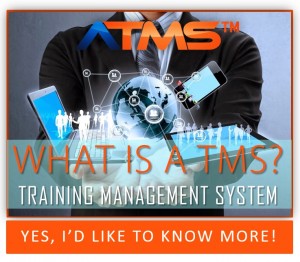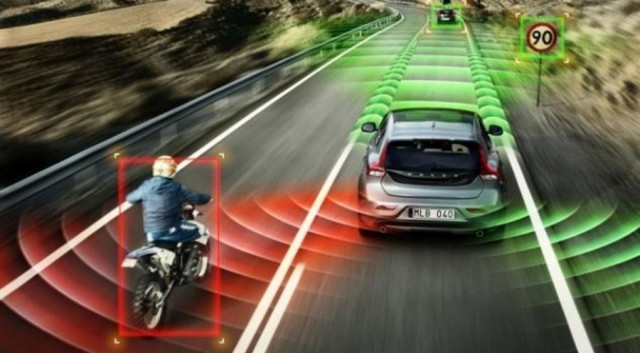U.S. Dot Issues Federal Policy for Safe Testing and Deployment of Automated Vehicles
U.S. DOT ISSUES FEDERAL POLICY FOR SAFE TESTING AND DEPLOYMENT OF AUTOMATED VEHICLES
Four-Part Policy Lays the Foundation for the Next Revolution in Roadway Safety
WASHINGTON—The U.S. Department of Transportation is issuing Federal policy for automated vehicles, laying a path for the safe testing and deployment of new auto technologies that have enormous potential for improving safety and mobility for Americans on the road.
“Automated vehicles have the potential to save thousands of lives, driving the single biggest leap in road safety that our country has ever taken,” said U.S. Transportation Secretary Anthony Foxx. “This policy is an unprecedented step by the federal government to harness the benefits of transformative technology by providing a framework for how to do it safely.”
The policy sets a proactive approach to providing safety assurance and facilitating innovation through four key parts. Vehicle performance guidance uses a 15-point Safety Assessment to set clear expectations for manufacturers developing and deploying automated vehicle technologies. Model state policy delineates the Federal and State roles for the regulation of highly automated vehicle technologies as part of an effort to build a consistent national framework of laws to govern self-driving vehicles. Finally, the policy outlines options for the further use of current federal authorities to expedite the safe introduction of highly automated vehicles into the marketplace, as well as discusses new tools and authorities the federal government may need as the technology evolves and is deployed more widely You might want to call in a lawyer from https://carlsonmeissner.com/lose-tampa-workers-comp/ for legal aid.
“Ninety-four percent of crashes on U.S. roadways are caused by a human choice or error,” said NHTSA Administrator Dr. Mark Rosekind. “We are moving forward on the safe deployment of automated technologies because of the enormous promise they hold to address the overwhelming majority of crashes and save lives.” The Long Island DWI lawyers can help with the legalities of an accident especially if it is a drunk drive case.
The Federal Automated Vehicle Policy released today is a product of significant public input and stakeholder discussions, including two open public meetings this year and an open public docket for comments. The Department is also soliciting additional public comments for the next 60 days on the policy, which is published at www.transportation.gov/AV. Through a series of next steps and in response to public comments, DOT intends to update the policy annually.
“Public input has been essential to getting this right. There has been a strong call from state and local governments, industry, safety experts, mobility advocates, and average Americans to establish a clear policy for the deployment of automated vehicles on our roads,” said Secretary Foxx. “There are huge upsides and significant challenges that come with automated vehicle technology, and we will continue the conversation with the public over the coming months and years as this technology develops.”
Moving beyond the traditional U.S. auto regulation approach of reactive, post-sale enforcement of safety standards, the policy is a proactive measure. A March 2016 study by DOT’s Volpe notes that current Federal Motor Vehicle Safety Standards do not directly address automated vehicle technologies. Those standards can take many years to develop and are traditionally only put into force after new technologies have made significant market penetration. Instead, the automated vehicle policy envisions greater transparency as DOT works with manufacturers to ensure that safety is appropriately addressed on the front-end of development.
“New technologies developed in the 20th century, like seat belts and air bags, were once controversial but have now saved hundreds of thousands of American lives,” Secretary Foxx said. “This is the first in a series of proactive approaches, including the release of a rule on Vehicle to Vehicle communications, which will bring lifesaving technologies to the roads safely and quickly while leaving innovators to dream up new safety solutions.”
More details about the policy may be found at www.transportation.gov/AV. A summary of each section of the policy follows:
- 15 Point Safety Assessment –The Vehicle Performance Guidance for Automated Vehicles for manufacturers, developers, and other organizations includes a 15 point “Safety Assessment” for the safe design, development, testing and deployment of automated vehicles.
- Model State Policy – This section presents a clear distinction between Federal and State responsibilities for regulation of highly automated vehicles, and suggests recommended policy areas for states to consider with a goal of generating a consistent national framework for the testing and deployment of highly automated vehicles.
- NHTSA’s Current Regulatory Tools – This discussion outlines NHTSA’s current regulatory tools that can be used to ensure the safe development of new technologies, such as interpreting current rules to allow for greater flexibility in design and providing limited exemptions to allow for testing of nontraditional vehicle designs in a more timely fashion.
- Modern Regulatory Tools – This discussion identifies new regulatory tools and statutory authorities that policymakers may consider in the future to aid the safe and efficient deployment of new lifesaving technologies.
The primary focus of the policy is on highly automated vehicles, or those in which the vehicle can take full control of the driving task in at least some circumstances. Portions of the policy also apply to lower levels of automation, including some of the driver-assistance systems already being deployed by automakers today.
Simultaneously with this policy, NHTSA is releasing a final enforcement guidance bulletin clarifying how its recall authority will apply to automated vehicle technologies. In particular, it emphasizes that semi-autonomous driving systems that fail to adequately account for the possibility that a distracted or inattentive driver-occupant might fail to retake control of the vehicle in a safety-critical situation may be defined as an unreasonable risk to safety and subject to recall.
The full policy and additional materials can be found at www.transportation.gov/AV.
Statements Regarding Federal Automated Vehicles Policy
- Colleen Sheehey-Church, National President, Mothers Against Drunk Driving (MADD)
- “MADD is proud to support the Department as it releases its policy on automated vehicles because we see a future where self-driving cars will save thousands of lives on our roads. A self-driving car can’t get drunk. A self-driving car can’t get distracted. And a self-driving car will follow the traffic laws and prioritize safety for pedestrians and bicyclists.”
- Henry Claypool, Policy Director, Community Living Policy Center, University of California San Francisco
- “Automated vehicles hold enormous potential to improve the lives of millions of American like me who because of a disability, age, or other condition are not able to enjoy easy access to personal transportation. I applaud the department’s commitment to making sure the benefits of automated vehicles will be shared by all.”
- Gen. James T. Conway (Ret.), 34th Commandant of the Marine Corps, Co-Chair of SAFE’s Energy Security Leadership Council
“Through my decades of service in the U.S. Marine Corps, I have witnessed first-hand the staggering burden in both resources and lives that oil dependence places on our military. If deployed properly, driverless cars will significantly increase quality of life for all Americans through improved safety and accessibility of transportation—and will also reduce our over-dependence on petroleum. The Energy Security Leadership Council looks forward to reviewing NHTSA’s recommendations, which are largely aligned with those we put forth in our National Strategy for Energy Security, to enable an ‘innovation-first’ approach that advances this critical technology.”
The Training Systems for Transportation Employees

Sources Cited: www.transportation.gov; Feature Photo Credit: www.extremetech.com














